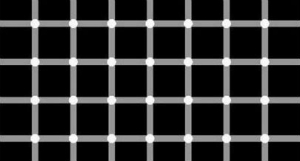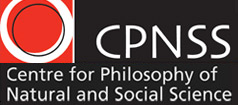We make countless judgements each day based on our perceptions. But can we really trust our senses? In a recent paper, Peter Dennis considers this question and poses a new challenge to one attempt to answer it.
Two views of perception
I believe that there’s a small money plant on my desk: crassula ovata, to be precise. Why do I believe this? Well, I’m looking at my desk, I can see that there’s a small money plant on it and I’d like to think that my perceptions can provide justification, or warrant, for beliefs about my environment. Isn’t this enough to give me confidence? That may depend upon how you think about perception.
On one very simple view, when I perceive something in my environment, the content of my perception is that very thing in my environment. When I look at my desk, I’m directly aware of the fact that there’s a money plant on it. If this view is correct then my perception will give me all the confidence I need: if P is a fact then the belief that P will be true.
However, people sometimes have illusions and hallucinations. This may cause trouble for our simple view of perception.
When people have illusions and hallucinations, the way their environment appears to them is not how it really is. Consider a mirage: When a thirsty traveller in the desert ‘sees’ a mirage, it seems to her as though there’s an oasis just over the next sand dune but when she gets there all she finds is more sand.
The traveller’s belief, that there’s an oasis over the next sand dune, although apparently warranted by her perception, turns out to be false. The fact that there is no oasis over the next sand dune defeats the warrant that her perception gave her for her belief.
From the subjective point of view of our traveller, this hallucination was indistinguishable from really seeing an oasis. This is why she formed the belief that there was an oasis. But, if it’s possible to have hallucinations as convincing as this then any warrant that my perception can give me for my belief about my money plant may not be as safe as the simple account of perception made out.
The traveller’s inability to distinguish between a mirage and genuinely seeing an oasis could also be explained by a different view of perception. On such a view, we don’t directly experience the world itself via perception at all. Instead, we only indirectly perceive the world and it is the presence of some kind of intermediary, common to both genuine perceptions, hallucinations and illusions, that makes them indistinguishable to the subject.
If perception is indirect in this sense and if we as perceivers are incapable of always being able to tell if what we’re seeing is an accurate representation of the world, then any warrant that perception can give me for my beliefs seems capable of being defeated. If this indirect view of perception is correct then all perceptual warrants for beliefs are defeasible.
Blocking the inference
When I introduced the alternative, indirect, view of perception, I made an inference from the fact that genuine perceptions can be subjectively indistinguishable from illusions and hallucinations to the claim that they share a common feature. Disjunctivism attempts to block this inference.
It’s just not obviously the case, claims the disjunctivist, that genuine and defective perceptions are indistinguishable to the subject because they share a common intermediary. When I see the money plant on my desk, I’m not seeing something that may or may not be somehow related to something in my environment. Instead, either I really am seeing the money plant or it merely seems as if I am.
If this ‘either… or…’ statement, this disjunction, is an accurate description of what’s going on when I perceive the world, then we’ll be able to hold on to our simple view of perception – at least for some of the time. When things are going well, when I perceive things as they really are, although I may not be able to know that things are going well, I am still directly aware of a fact in the world.
When I see the money plant on my desk and things are going well, i.e. when there really is a money plant on my desk, the warrant for my belief about the money plant is the very fact that it’s sitting there on my desk. Disjunctivism claims that genuine perceptions provide factive warrants for beliefs about my environment.
As I said: if it’s a fact that P, then my belief that P will be true. So, if our perceptions provide factive warrants, at least in the good cases, then these warrants are incapable of being defeated. The disjunctivist concludes that perception can provide indefeasible warrants for beliefs.
If this is the correct description of what’s going on in perception then it could be used to undermine all manner of sceptical, and radically revisionary, arguments about how we can gain knowledge of the world.
Trying to have it both ways?
In “Criteria for Indefeasible Knowledge: John McDowell and Epistemological Disjunctivism” (available here), Peter Dennis considers exactly what a disjunctivist has to be committed to in order to reach their conclusion.
If my perceptions, in good cases, can provide factive warrants for beliefs then these beliefs cannot be refuted. To refute such a belief you’d need to show that what it holds to be true isn’t the case, but being factive means that what it holds to be true just is the case, it’s the facts! However, Dennis asks, is being immune to refutation enough for something to be indefeasible?
Suppose that in a few weeks’ time I find out that as I was writing this, students from the Social Psychology Department were carrying out a bizarre experiment: they were going around the School replacing some people’s plants with plastic ones. This experiment involved replacing only some plants, not letting on which plants had been replaced and switching the plastic ones back for the real ones at the end of the day.
If I were to find this out then my belief that there was a money plant on my desk today would not seem quite as safe as it did. As I would be unsure as to whether my money plant was one of the ones that had been replaced, I would lose the confidence that my perception originally seemed to give me for my belief.
A situation like this isn’t quite the same as refuting my belief. It’s not as if somebody had come over to my desk and pointed out to me that what I thought was my money plant was actually a fake plastic copy. Instead of refutation, Dennis calls this kind of example a case of undermining my belief.
It seems plausible to suggest that in cases such as this I would have to suspend judgement and by doing so I would have to accept that although my belief has not been refuted, my perceptual warrant for this belief has been defeated. However, according to the disjunctivist’s account of perception I can’t do this for good cases of perception. Remember that good cases of perception are thought to provide indefeasible warrants for my beliefs.
How should the disjunctivist respond to this? Dennis argues that they cannot deny that examples like the one with which I started are genuine examples of perception. When I saw the money plant on my desk I was in as good a position as one could reasonably demand for making judgements about my environment. If we’re willing to accept that perceptual beliefs formed in what seem to be ideal conditions for seeing things can be challenged in this way at a later time then this could easily open up the sceptical floodgates.
For example, even if I did have the resources to show that the money plant I saw was indeed mine, what’s to stop my challenger from suggesting that I merely dreamt that I saw it, or that what seemed to be an instance of seeing was really the work of some brain-manipulating scientist with a little too much time on his hands? Whatever evidence I can provide to show that my perception was genuine seems capable of being challenged by the sceptic. Unless we want to accept only one disjunct of the disjuntivist’s description of perception (the bad one) then we have to draw the line somewhere.
If I’m unwilling to give in to the sceptic by attempting to provide evidence from my environment for the genuineness of my money plant, then how can I maintain that my warrant remains undefeated by the revelation of the bizarre experiment?
Dennis’s claim is that this can only be done by appealing to the experience itself: by claiming that I can tell, via introspection, whether my perception is one of the good (i.e. genuine) or bad (i.e. defective) cases.
This would indeed preserve the indefeasibility of the warrant that my perception of my money plant gave me. When confronted with the revelation of the bizarre experiment I could safely believe that what I perceived was my real money plant because I could tell on the basis of my perception (at the time) that it was genuine.
At first sight this may seem like a happy ending, but as Dennis points out, the disjunctivist cannot coherently accept this. In order to block the sceptic’s inference, the disjunctivist needs to accept that there can be hallucinations that are so convincing that they can’t be distinguished from genuine cases of perception. But this is exactly what they need to deny when responding to examples like the bizarre experiment!
In order to block the inference, the disjunctivist needs to accept their opponent’s premise whilst resisting their conclusion. Without accepting this premise they’re not even engaging with the argument. However, if Dennis’s arguments are sound then in order to hold on to the indefeasibility of perceptual warrants they need to reject this very same premise!
Epistemological disjunctivism is trying to have it both ways, and as we all know, you can’t P and not-P.
By Ewan Rodgers
Peter Dennis is an LSE Fellow in the Department of Philosophy, Logic and Scientific Method. His paper, “Criteria for Indefeasible Knowledge: John McDowell and Epistemological Disjunctivism”, has been published in Synthese, November 2014, Volume 191, Issue 17, pp 4099-4113. A freely accessible preprint is available here.
Featured image credit: Michael Gwyther-Jones / CC BY 2.0





